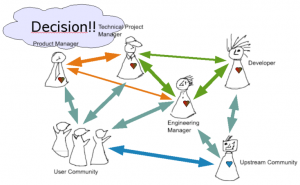Nat blogged about Life Logging which means that one logs some life influencing parameters such as get up and go to bed times, blood pressure and more. While it might be funny to see some statistical data about ones life and maybe useful for pub evenings (“I bet you can’t beat me in that: On mornings after evenings where I had fife beers and the average temperature in the pub was not above 25°C and the amount of female guests was under 56% I make it to a shoesize of 46!”) I think that is quite useless. The human being is a too complex thing. It is influenced by tons of parameters. Measureing just can log a few of them. That would not be a problem, as long as one does that for the pub purpose, but as Nat says this is done for “performance optimization” of the person, it gets difficult.
I would love to argue now with more or less esoteric theories of what a person is influenced from like the polarization of the sunlight or earth rays but I fear that would not be appreciated by the usual audience here. So lets stress automatic control engineering (german Regelungstechnik, I hope that translates) which fascinated me earlier.
There is a base axiom that says: The more complex the system to control is, the more complex the model of the system is and the more parameters you have to take into account for your controller model to control the system to get the expected outcome. If your model of the controlled system does not align with the real system and/or wrong input parameters are picked you do not get what you want. The whole circle of controlled system and controller becomes unstable.
Given the complexity of the human being I think it is impossible to get something usefull out of measuring a few parameters of life and hope to get any hints for “performance improvements”. Its dangerous because it easily might become unstable.
And imagine how long it takes to log all the data and how complicated it might become – for example if you need to log the percentage of women in the pub every 10 minutes, that might lead to interesting social interaction. That time and trouble can be saved.
My suggestion is to improve self performance through self awareness. People need to learn to listen to themselves and do what is good for them. How that can be done? Well, yes, that seems not always to be an easy task. Suggestions around that I better leave that for the next “Dragos hints for a better personal life” lesson 😉

